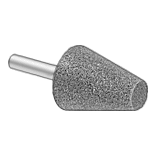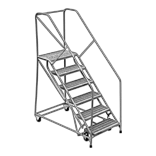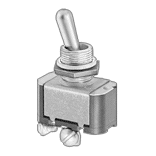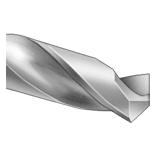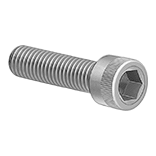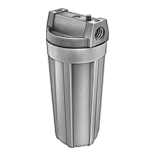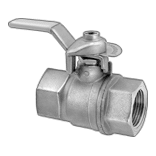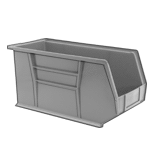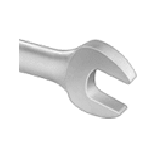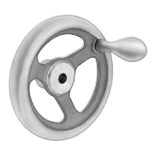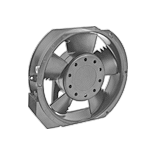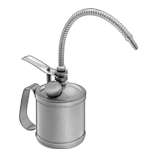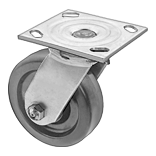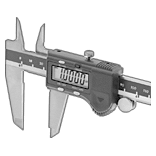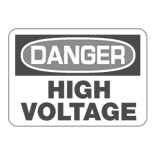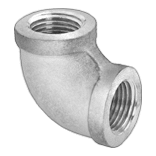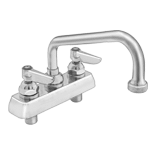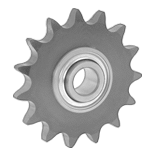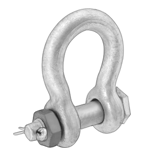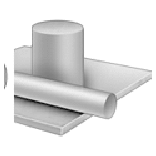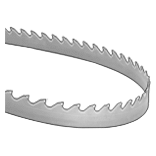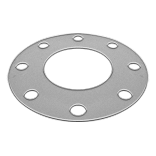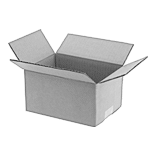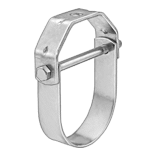How to Identify and Measure Fittings
Pipe size is an industry designation, not the actual size. View information about how to measure threaded and unthreaded pipe and pipe fittings.
More
How to Measure Fittings
Pipe size is an industry designation, not the actual size. View information about how to measure threaded and unthreaded pipe and pipe fittings.
More
Threaded Flow Control Orifices

Connect these orifices to threaded pipe, or insert them into threaded holes. Also known as flow restrictors and precision orifice valves, they are used to throttle, vent, bleed, or regulate the flow of liquids and gases.
For technical drawings and 3-D models, click on a part number.
Pressure-Compensating Threaded Flow-Control Orifices


- For Use With: Water
- Max. Pressure: 120 psi @ 140° F
- Temperature Range: 40° to 140° F
When inlet pressure changes, these orifices automatically adjust to deliver a consistent outlet flow. They connect to threaded pipe, or fit into threaded holes. Also known as flow restrictors and precision orifice valves, they are commonly used to regulate the flow of water during treatment.
Flow-Control Flange Unions
Measure, throttle, and regulate the flow of liquids and gases in your line by adding an orifice plate to these unions. They consist of two flange halves, plus all of the components needed to connect them together. Tighten the jack bolts to separate the flange halves to inspect or replace the orifice plate.
To throttle flow, mount an orifice plate between the two flanges. The orifice plate restricts the flow in order to regulate it.
To measure flow, build the same assembly, except you’ll also connect a differential pressure gauge or transmitter to both flange halves using the threaded ports. Your gauge or transmitter will measure the difference between the pressure before and after the orifice plate. The pressure difference is proportional to flow rate, so you can use that measurement to calculate your line’s flow rate.
Butt-weld flanges are also known as weld-neck flanges; the flange neck has a beveled end that, when flush to pipe, creates a trough for a strong weld. Slip-on weld flanges have no internal stop; slide a pipe through the flange and weld on both sides.
316/316L stainless steel flanges have excellent corrosion resistance.
For technical drawings and 3-D models, click on a part number.


- For Use With: Air, Natural Gas, Oil, Water
- Temperature Range: Not Rated
- Specifications Met: See table
- Pressure Class: 300
- Fittings:
Carbon Steel: Use Schedule 40 steel
316/316L Stainless Steel: Use Schedule 40 stainless steel - Pipe Nipples and Pipe:
Carbon Steel: Use Schedule 40 steel
316/316L Stainless Steel: Use Schedule 40 stainless steel
Bolt Hole | Port | ||||||||||
|---|---|---|---|---|---|---|---|---|---|---|---|
| Pipe Size | Construction | Flange OD | For Bolt Dia. | Dia. | No. of | Bolt Circle Dia. | Pipe Size | No. of | Includes | Each | |
Carbon Steel | |||||||||||
| 3/4 | Seamless | 4 5/8" | 5/8" | 11/16" | 4 | 3 1/4" | 1/2 NPT | 2 | Gaskets, Jack Bolts, Nuts, Port Plugs, Threaded Rods | 0000000 | 0000000 |
316/316L Stainless Steel | |||||||||||
| 3/4 | Seamless | 4 5/8" | 5/8" | 11/16" | 4 | 3 1/4" | 1/2 NPT | 2 | Gaskets, Jack Bolts, Nuts, Port Plugs, Threaded Rods | 0000000 | 000000 |


- For Use With: Air, Natural Gas, Oil, Water
- Temperature Range: Not Rated
- Specifications Met: See table
- Pressure Class: 300
- Fittings:
Carbon Steel: Use Schedule 40 steel
316/316L Stainless Steel: Use Schedule 40 stainless steel - Pipe Nipples and Pipe:
Carbon Steel: Use Schedule 40 steel
316/316L Stainless Steel: Use Schedule 40 stainless steel
Flow-Control Orifices for Water

- Max. Pressure: 200 psi @ 180° F
- Temperature Range: 33° to 180° F
Also known as flow restrictors and precision orifice valves, these orifices are used to throttle, vent, bleed, or regulate flow in water systems. They automatically adjust to changing inlet pressure to maintain consistent outlet flow.
Nickel-plated brass orifices are more corrosion resistant than orifices with a plain brass body.
316 stainless steel orifices have the best corrosion resistance.
For technical drawings and 3-D models, click on a part number.
Flow-Control Orifices for Chemicals

- For Use With: Air, Ammonia, Sodium Hydroxide, Beverage, Carbon Dioxide, Diesel Fuel, Water, Oil, Ethylene Glycol, Food, Hydrochloric Acid, Kerosene, Liquid Carbon Dioxide, Methanol, Soap Solutions, Methyl Ethyl Ketone, Mineral Spirits, Natural Gas, Oxygen, Nitric Acid
- Max. Pressure: 120 psi @ 75° F
- Temperature Range: 40° to 140° F
Made of PVC, these orifices have excellent resistance to a wide range of corrosive chemicals. Also known as flow restrictors and precision orifice valves, they are used to throttle, vent, bleed, or regulate the flow of liquids and gases. They automatically adjust to changing inlet pressure to maintain consistent outlet flow.
For technical drawings and 3-D models, click on a part number.
